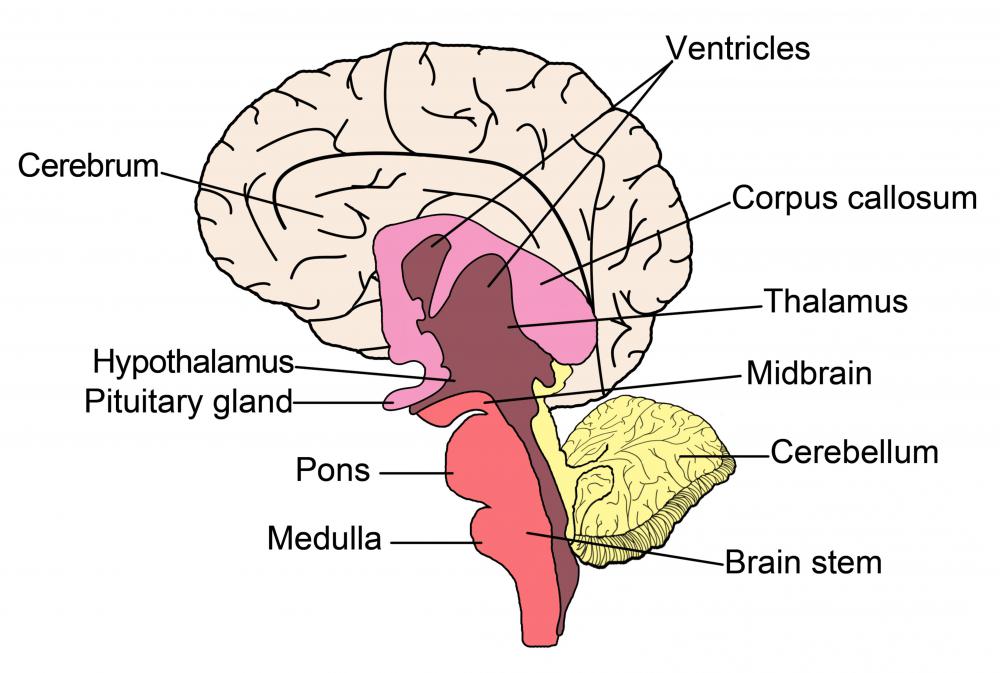At WiseGEEK, we're committed to delivering accurate, trustworthy information. Our expert-authored content is rigorously fact-checked and sourced from credible authorities. Discover how we uphold the highest standards in providing you with reliable knowledge.
What Are Opioid Peptides?
There are a number of neurons that release chemical substances in the brain which affect many thousands of neurons, even if those neurons are situated at a distance from each other. The chemicals released by these neurons are called neuromodulators. These chemicals modulate the activity of neurons that contain receptor molecules which recognize and bind to them. Opioid peptides are neuromodulators found in the central nervous system, and they consist of three major classes: beta-endorphins, enkephalins and dynorphins. These opioids activate opioid receptors, which are also targets for opiate drugs such as morphine and heroin.
Neuromodulators such as opioid peptides are extensively spread throughout the brain and activate or reduce many neuronal pathways. These circuits or pathways are activated when terminal buttons located on presynaptic neurons release opioids in the brain, which binds to opioid receptors that are located on postsynaptic neurons. This results in the stimulation of these neurons, causing a range of physiological and behavioral effects, including a reduction in pain sensitivity.

When opioid peptides such as beta-endorphins are released in the brain, they are known to cause a decrease in sensitivity to pain. Beta-endorphins, which are morphine-like substances, are synthesized or produced in various areas of the brain. One such area is the hypothalamus, an area involved in temperature regulation, sexual behavior and pain responsiveness. When beta-endorphins send signals from the hypothalamus to pathways located in the brainstem, they inhibit the transmission of pain sensations within the body, reducing pain just as morphine would do.

Other behavioral effects include an inclination to continue or persist in ongoing behavior. For example, when an animal is engaging in specific species-like behaviors such as fighting, opioids are released. These opioid peptides ensure that an animal will continue fighting in order to protect itself from predators and will not be stopped by pain.
Opioid receptors are not only stimulated by opioids, they also can be activated by chemicals that mimic similar outcomes. The opium poppy seed consists of a group of chemicals called opiates that stimulate certain opioid receptors. When the opium poppy seed is smoked or eaten, it is known to inhibit pain and create pleasant effects. Opiates imitate the effects that opioid peptides have on the brain by stimulating opioid receptors causing both inhibitory and excitatory effects. Inhibitory effects include a reduced sensitivity to pain, sedation and a lowering in body temperature, and excitatory effects are what entice individuals to continue taking opiates such as heroin, often resulting in addiction.
AS FEATURED ON:
AS FEATURED ON:















Discuss this Article
Post your comments